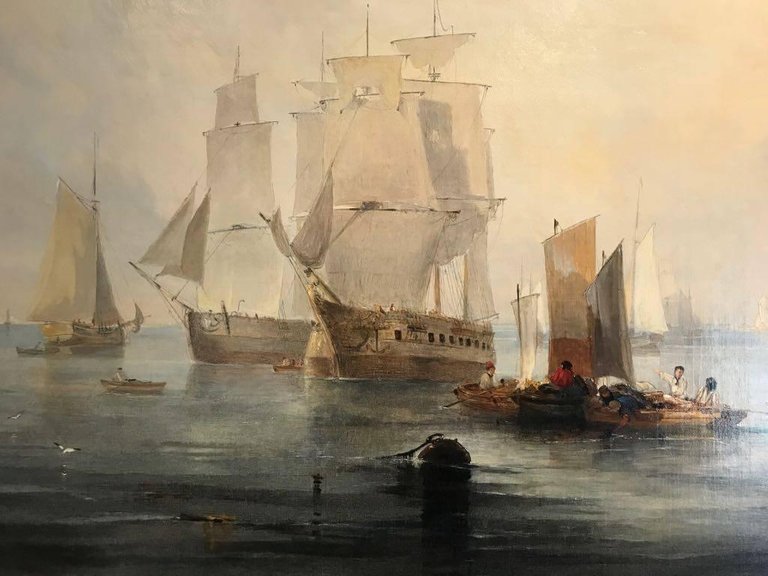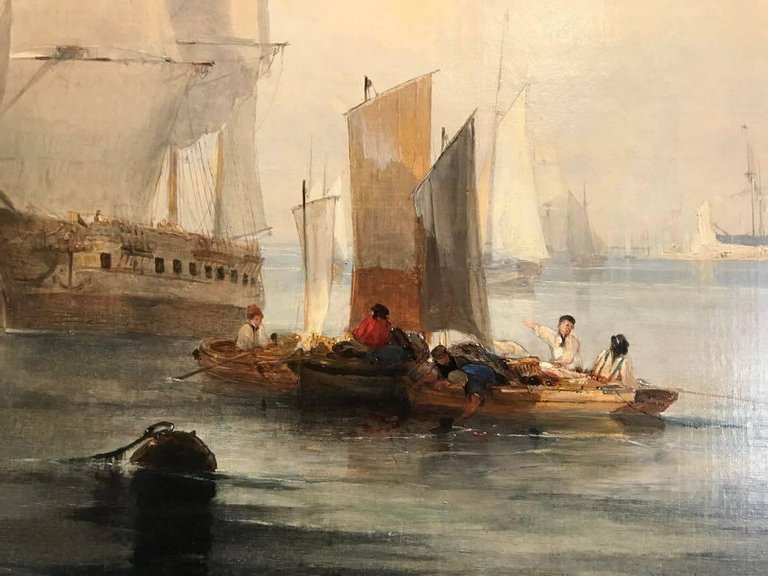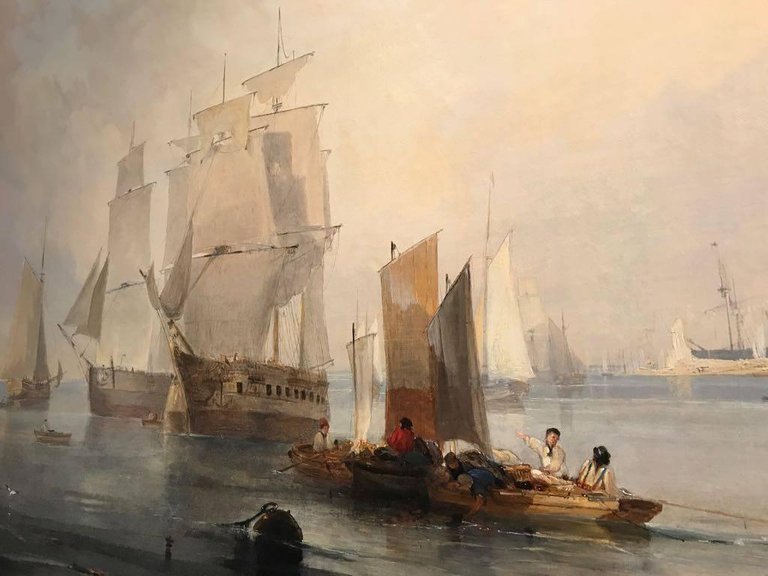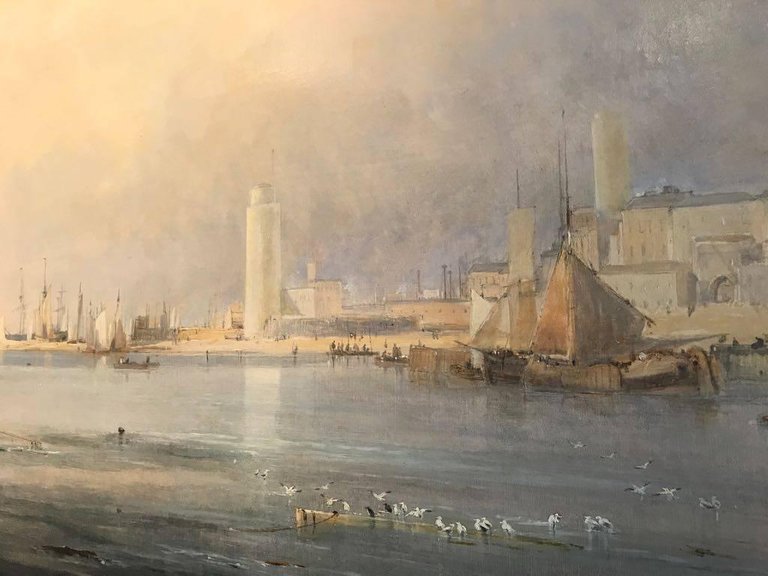John Wilson EWBANK (1799 - 1847)
Shipping in the Harbour, South Shields
oil on canvas
39.5 x 58 inches;
47.75 x 66.5 inches, inc. frame
Provenance:
Christie's October 2002; Lot 11. Fine Art Society;
Private Collection
This mighty Ewbank is full of light and warmth and certainly his greatest work of the sort rarely - if ever - seen on the market. John W. Ewbank (4 May 1799–28 November 1847), was an English-born landscape and marine painter largely operational from Scotland. The Humber River is a large tidal estuary on the east coast of Northern England.
Life
Ewbank was born at Darlington on 4 May 1799, the son of Michael Ewbank, an innkeeper. He was adopted as a child by a wealthy uncle who lived at Wycliffe, on the banks of the River Tees, in the North Riding of Yorkshire. Intended for the Roman Catholic priesthood, he was sent to Ushaw College, from which he absconded.
In 1813 Ewbank was apprenticed to Thomas Coulson, an ornamental painter in Newcastle. In around 1816 he moved with Coulson to Edinburgh, where he had some lessons with Alexander Nasmyth. He found work both as a painter and a teacher. He was nominated in 1830 one of the foundation members of the Royal Scottish Academy. In 1833 he is listed as living at 7 Union Street on the eastern fringe of the New Town in Edinburgh.
Works
His sketches from nature were especially admired, and a series of 51 drawings of Edinburgh by him was engraved by W. H. Lizars for James Browne's Picturesque Views of Edinburgh (1825). He also made a reputation with cabinet pictures of banks of rivers, coast scenes, and marine subjects.
As an illustrator, he illustrated some early editions of Scott's Waverley Novels and one edition of Gilbert White's Natural History of Selborne.
After 1829 he changed style and painted The Visit of George IV to Edinburgh, The Entry of Alexander the Great into Babylon, and Hannibal crossing the Alps





